Are You an Abraham Lincoln Enthusiast? Start Collecting Lincoln Pennies Today!
If you admire Abraham Lincoln and enjoy collecting U.S. coins, Lincoln pennies are an exciting and accessible starting point—especially when you come across rare varieties or error coins that can be worth hundreds or even thousands of dollars.
In this article, you’ll find everything you need to know about the 1999 Lincoln Memorial penny, including:
- How much your coin is worth in circulated and uncirculated condition
- Which error coins to look for that could earn you a small fortune
Let’s dive in!
1999 Penny Value Chart
| Mint Mark | MS63 | MS65 | MS67 | MS69 |
|---|---|---|---|---|
| 1999 No-Mint Mark Penny | $7 | $15 | $28 | $8,500 |
| 1999-D Penny | $6 | $8 | $22 | $425 |
| 1999-S Proof Penny | $45 | $65 | $90 | $215 |
Values reflect red-colored coins graded by professional services.
History of the 1999 Penny

The Lincoln penny was first struck in 1909 to commemorate the 100th anniversary of President Abraham Lincoln’s birth. It marked a major shift in U.S. coinage history, as it was the first U.S. coin to feature a real person—prior designs had typically showcased allegorical figures like Lady Liberty.
The introduction of the Lincoln cent was heavily influenced by President Theodore Roosevelt, who aimed to modernize and elevate the artistic quality of American coinage. In 1908, Roosevelt collaborated with sculptor Victor David Brenner to design a medal for the Panama Canal Commission. Impressed by Brenner’s work, particularly a 1907 plaque of Lincoln, Roosevelt recommended him to Mint Director Frank Leach as the ideal artist for the new one-cent coin.
After months of anticipation, the Lincoln Wheat Penny was officially released in August 1909. Brenner’s right-facing portrait of Abraham Lincoln on the obverse has remained largely unchanged to this day. The original reverse featured two wheat ears, giving the coin its nickname.
In 1959, to honor Lincoln’s 150th birthday, the reverse design changed to depict the Lincoln Memorial, crafted by Frank Gasparro. This design was in use until 2008, when it was replaced again with four special reverses in 2009 to mark Lincoln’s bicentennial.
In 1999, the Lincoln penny was still struck with the Lincoln Memorial reverse. That year, the Philadelphia, Denver, and San Francisco mints produced coins for circulation and proof sets. Although these coins are relatively modern, several varieties and mint errors from 1999 have become especially valuable to collectors.
In the next section, we’ll explore the key features and errors that make the 1999 Lincoln Memorial cent worth money.
Features of the 1999 Penny
The Obverse of the 1999 Penny
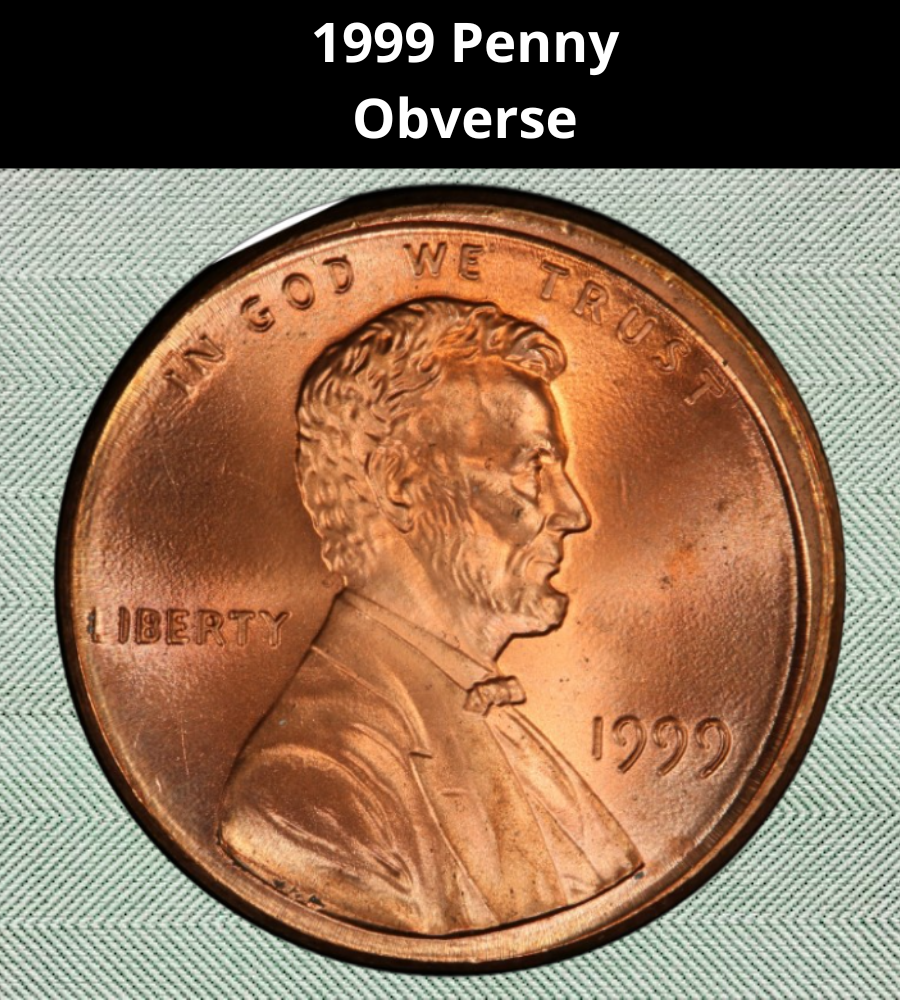
The obverse of the 1999 Lincoln penny features a right-facing bust of President Abraham Lincoln, honoring his legacy as one of the most revered leaders in American history.
Above Lincoln’s head is the enduring national motto: “IN GOD WE TRUST.” To the left, just behind Lincoln’s shoulder, appears the word “LIBERTY,” while the date “1999” is positioned to the right, just in front of his profile. If the coin was minted in Denver or San Francisco, you’ll also find the corresponding mint mark (D or S) below the date.
This classic design by Victor David Brenner has remained a staple of U.S. coinage since its introduction in 1909.
The Reverse of the 1999 Penny
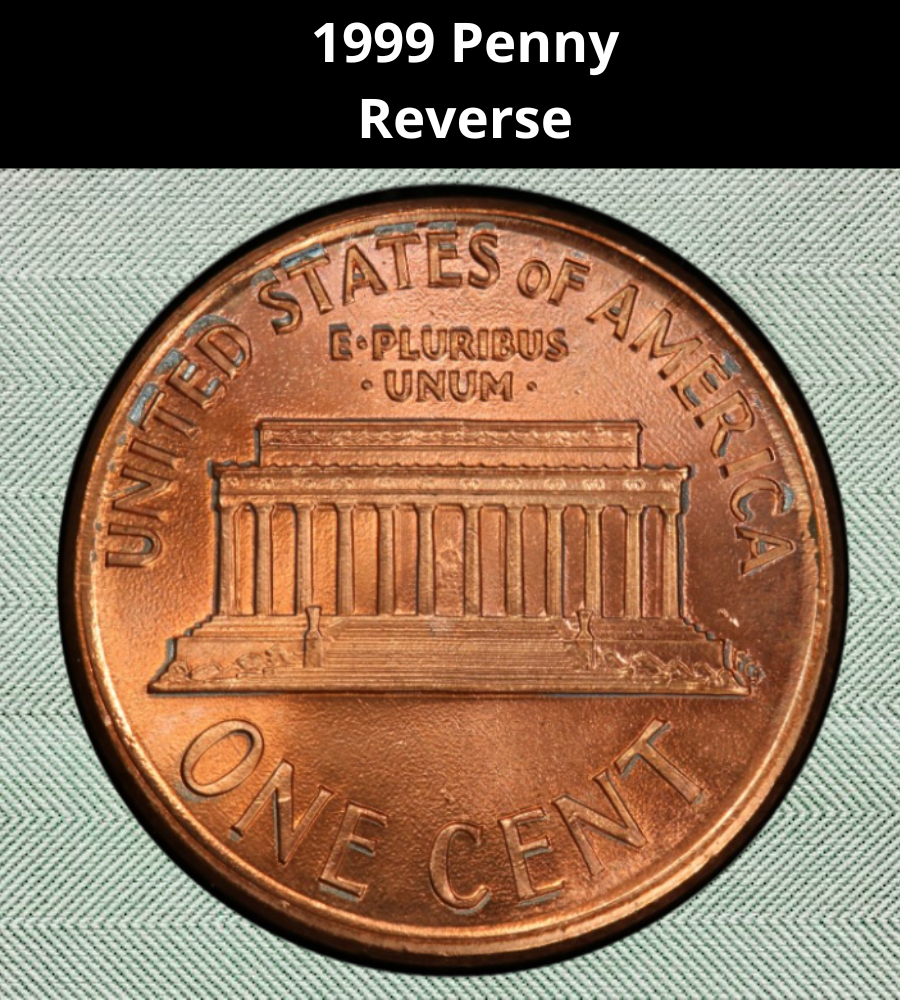
The reverse of the 1999 Lincoln penny features a detailed image of the Lincoln Memorial, a design created by Frank Gasparro in 1959 to honor the 150th anniversary of Lincoln’s birth.
At the top of the coin, you’ll see the inscription “UNITED STATES OF AMERICA,” followed just below by the national motto “E PLURIBUS UNUM” in a smaller font.
The denomination “ONE CENT” is prominently displayed along the bottom rim of the coin. If you look closely at the Memorial, you may even spot a tiny silhouette of the Lincoln statue between the columns—an impressive detail for such a small coin.
Other Features of the 1999 Penny
The 1999 Lincoln penny includes several key physical and minting characteristics that collectors should note:
- Weight: 2.5 grams
- Diameter: 19.00 millimeters
- Edge: Plain (smooth)
- Composition: Copper-plated Zinc (97.5% zinc, 2.5% copper)
These coins were struck at three U.S. Mint facilities:
- Philadelphia Mint: No mint mark
- Denver Mint: Marked with a “D”
- San Francisco Mint: Proof coins only, marked with an “S”
Only the Denver and San Francisco issues include a visible mint mark on the obverse, just below the date. Coins from Philadelphia do not carry any mint mark.
1999 Penny Grading
Lincoln cents are some of the most collected coins in U.S. history, and understanding how to properly grade them is key to estimating their value.
Color Designation
1999 pennies are primarily copper-plated zinc coins, which are prone to discoloration over time. Collectors categorize these coins by color, which significantly affects their value:
- Brown (BN): Completely brown, with little or no original red luster remaining.
- Red-Brown (RB): About 15% to 80% original red remains, with the rest turning brown.
- Red (RD): At least 90% of the coin retains its original red color — the most desirable condition for collectors.
Even uncirculated coins can tone or oxidize, so red pennies that maintain their fresh-mint appearance often command premium prices.
Condition and Wear
Aside from color, coin condition is assessed using the Sheldon Grading Scale, which ranges from 1 (Basal) to 70 (Perfect Mint State):
| Grade # | Description |
|---|---|
| 1 | Basal State |
| 2 | Fair |
| 3 | Very Fair |
| 4–6 | Good |
| 7–10 | Very Good |
| 12–15 | Fine |
| 20–30 | Very Fine |
| 40 | Extremely Fine |
| 50 | About Uncirculated |
| 60 | Mint State (MS) |
| 65 | Gem Mint State (MS65) |
| 70 | Perfect Mint State (MS70) |
To determine your coin’s grade:
- Examine the high points, like Lincoln’s hair, shoulder, and beard — these areas show the first signs of wear.
- Look for contact marks, dents, or scratches in the coin’s fields (the flat areas).
- A Mint State (MS) coin should retain full mint luster, sharp details, and exhibit no signs of circulation.
Only coins that are free of wear and have excellent eye appeal can be graded as MS65 or higher, which are considered gem-quality and fetch the highest prices.
Tip: For most 1999 pennies, it may not be cost-effective to seek professional grading unless the coin has unusual characteristics, such as a rare error or is in exceptionally high grade and red condition.
1999 Penny Value Guides
1999 No Mint Mark Penny Value
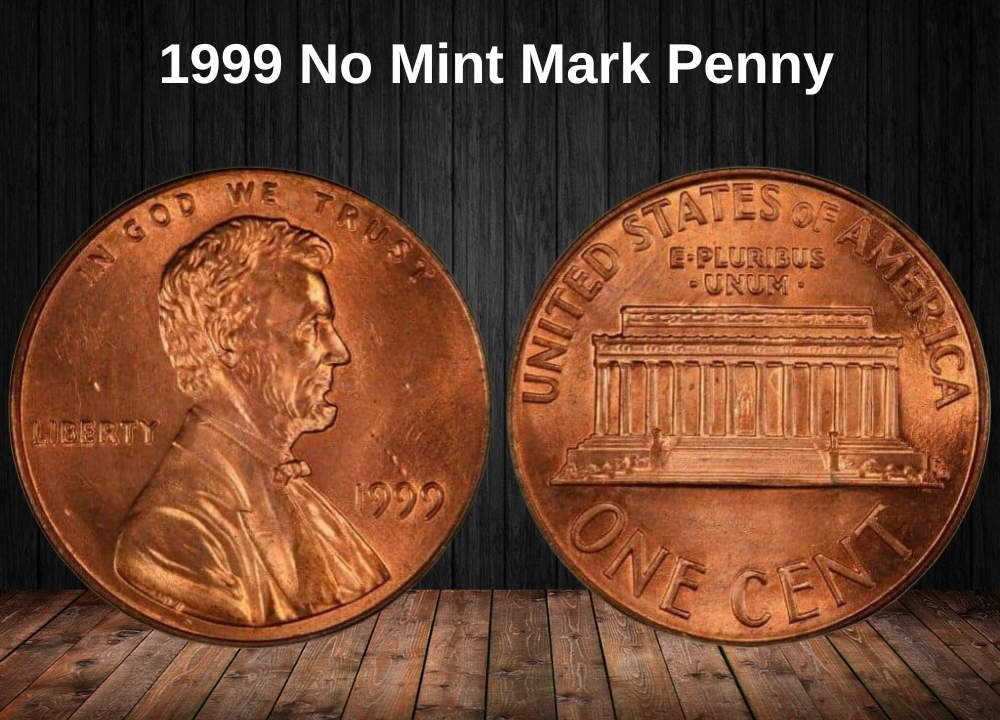
The Philadelphia Mint produced an enormous quantity of 5,237,600,000 Lincoln pennies in 1999. With such a high mintage, these coins remain extremely common in everyday circulation.
Because of how easily available they are, most 1999 pennies without a mint mark typically aren’t worth more than their face value—unless they’re in exceptional condition.
Circulated Value
If your coin has been used in circulation and has a brown tone, it’s likely worth between $4 and $14, depending on the level of wear and overall appearance.
Uncirculated Value
Uncirculated examples in top condition can bring in more money, especially those with a bright red color:
- A brown MS67 penny might be valued around $10.
- A red MS68 penny could reach up to $150.
- An unusually rare red MS66 specimen fetched $900 at auction in 2024.
Close AM and Wide AM Varieties
An important detail for collectors is the presence of two distinct reverse varieties for the 1999 Philadelphia penny: Close AM and Wide AM.
These terms refer to the spacing between the letters A and M in the word AMERICA on the reverse side of the coin:
- On Close AM varieties, the letters are nearly touching.
- On Wide AM versions, there is a noticeable gap between them.
The Wide AM reverse was originally intended for proof coins only, but a small number were mistakenly used on regular circulation coins, creating a collectible error.
Because of their rarity, both Close AM and Wide AM varieties from Philadelphia can command values of up to $200, particularly when they’re in high Mint State grades and have a red color designation.
1999-D Penny Value
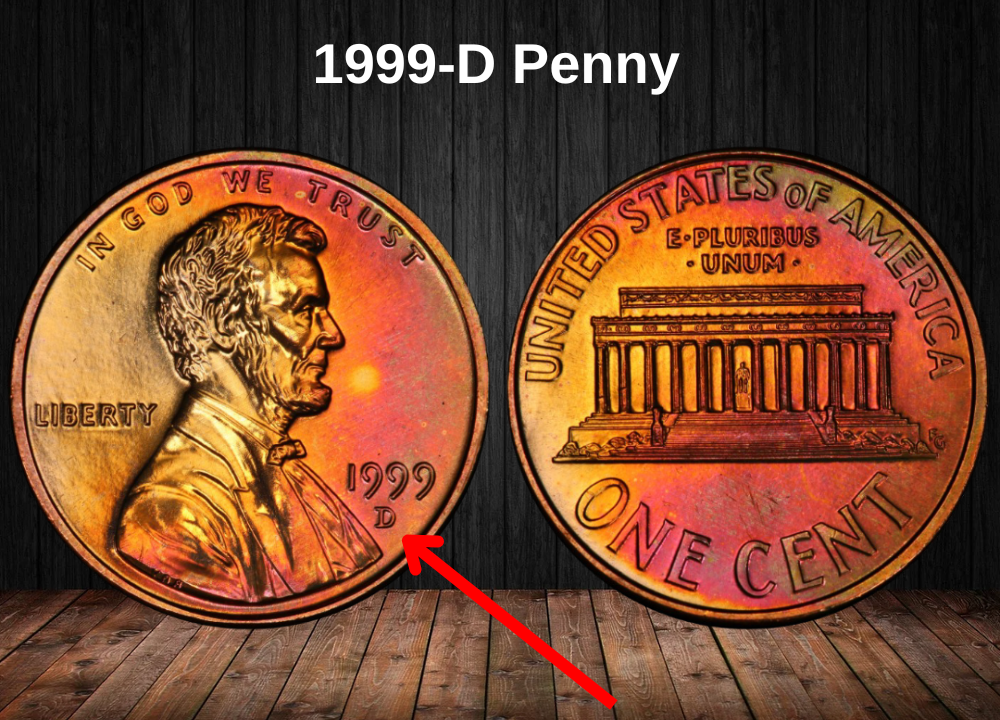
The Denver Mint produced Lincoln Memorial pennies in 1999 as well, with a total mintage of approximately 6,360,065,000 coins bearing the “D” mint mark on the obverse. This makes it the largest production volume among the three mints that year.
These 1999-D pennies are commonly found in circulation and remain quite affordable for collectors. In circulated condition, their value ranges roughly between $6 and $425, depending on their grade and color.
For coins in mint state condition:
- A brown MS67 1999-D penny typically sells for around $10.
- A red-brown MS67 example is valued similarly at about $10.
- A red MS67 coin commands a higher price, reaching up to $22.
One particularly rare and high-quality red 1999-D penny graded MS69 fetched $408 at a Heritage Auctions sale in 2018, highlighting the value of exceptional specimens.
1999-S Proof Penny Value
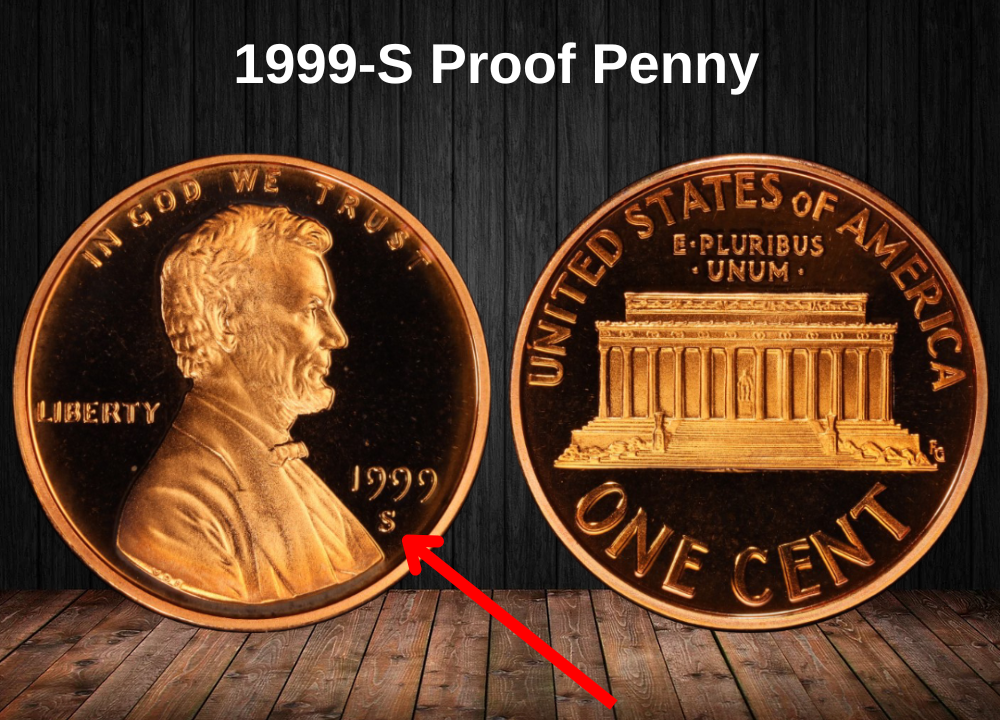
As usual, the San Francisco Mint produced proof pennies for the 1999 release. These coins stand out due to their shiny finish and the distinctive “S” mint mark on the obverse side.
Similar to the Philadelphia pennies, the 1999 proof pennies from San Francisco were struck with both close AM and wide AM varieties, with collectors generally favoring the close AM version.
These 1999-S proof pennies are generally affordable for collectors. A gem-quality coin graded MS66 could cost around $80.
The highest-priced 1999-S proof penny with the close AM variety was graded MS69 and sold for $217 in 2017. Additionally, a deep cameo (DCAM) 1999-S proof penny graded MS70 fetched $115 at a 2007 auction.
Rare 1999 Penny Error List
1999 Doubled-Die Penny Error
A doubled-die error occurs when the coin’s design is impressed twice on the die, but with a slight misalignment between the two strikes. This causes the coin to display a faint duplicate image offset from the original.
While doubled-die errors are fairly common in Lincoln cents, they remain highly sought after by collectors. Currently, a 1999 penny showing pronounced doubling on Lincoln’s portrait is listed on eBay with a price of $5,400.
1999 Wide AM Penny Error
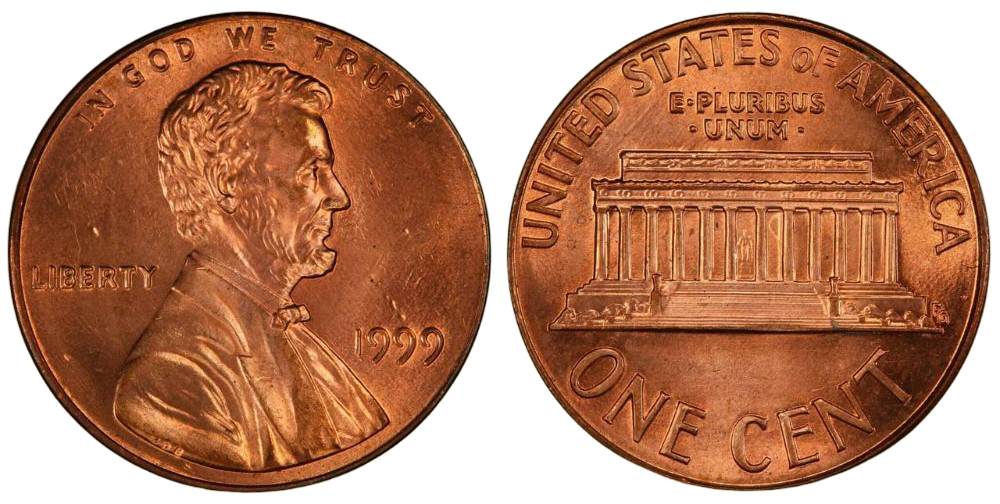
The Wide AM error is a popular and valuable variety among 1999 pennies.
This mistake happened when the Philadelphia and San Francisco mints mistakenly used proof dies on some regular pennies, causing the spacing between the letters A and M in the word AMERICA on the reverse to be noticeably wider than usual.
Because of its rarity, collectors highly prize this error, with some examples fetching prices up to $300.
1999 Double-Struck Off 2nd Off Center Penny Error
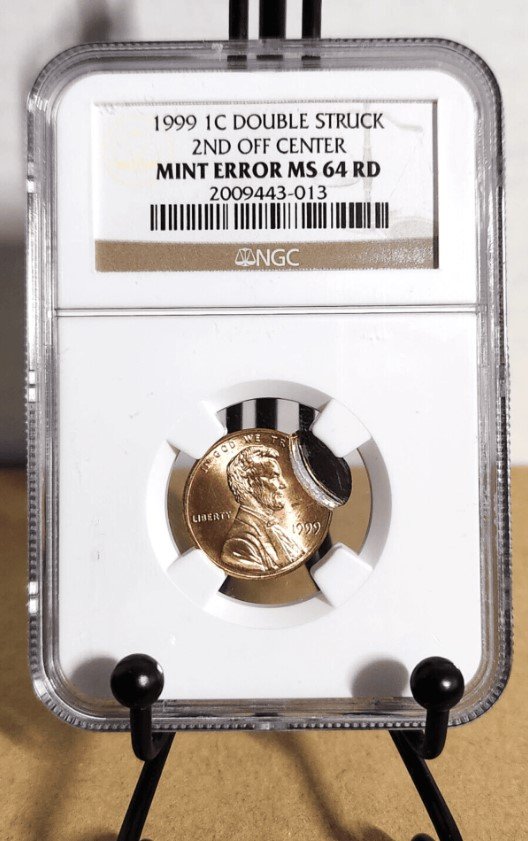
A double-struck off-center error is a fascinating anomaly that many collectors are eager to add to their collections.
This type of error happens when a coin isn’t fully ejected after the first strike, causing it to be struck again—but this time, the impression is misaligned and off-center.
A 1999 Lincoln penny with this double-struck off-center error can command prices up to $275 or more, especially if it maintains a bright, lustrous appearance.
1999 Broad Struck Penny Error
Broad strike errors are fairly rare, which makes them especially appealing to collectors. This mistake occurs when the die strikes the coin outside the collar that normally holds the blank in place and defines its diameter. As a result, the coin appears stretched or wider than normal.
A 1999 penny with a broad strike error can sell for around $85, and those in mint condition may be valued at up to $100.
Where to sell your penny?
Now that you know the value of your penny, you might be wondering where to sell it. Don’t worry: here’s a guide to some of the best online platforms where you can easily sell your coins, along with their advantages and disadvantages.
Discover the best platforms for selling coins online (pros and cons).
FAQ about the 1999 Penny
1. What is the composition of the 1999 penny?
The 1999 penny is made of a zinc core (97.5%) with a thin copper plating (2.5%), consistent with pennies minted since 1982.
2. Which mints produced the 1999 penny?
The 1999 penny was produced at Philadelphia (no mint mark), Denver (“D” mint mark), and San Francisco (“S” mint mark) for proof coins.
3. Are there any notable errors or varieties in the 1999 penny?
Yes, error coins such as doubled dies, off-center strikes, and die cracks have been found. While not extremely rare, these errors are sought after by collectors.
4. What design features does the 1999 penny have?
The obverse features Abraham Lincoln’s portrait, and the reverse shows the Lincoln Memorial, used from 1959 to 2008.
5. How common is the 1999 penny?
The 1999 penny is very common, with billions minted at Philadelphia and Denver, and millions of proof coins from San Francisco.
6. What is the typical value of a 1999 penny?
Most circulated pennies are worth face value. Uncirculated and proof coins may be valued from a few cents up to a few dollars, while error coins can fetch higher prices.
7. Is collecting 1999 pennies a good investment?
Generally, common 1999 pennies are not good investments due to their abundance. However, error coins and high-grade or proof examples may hold more value.


















































